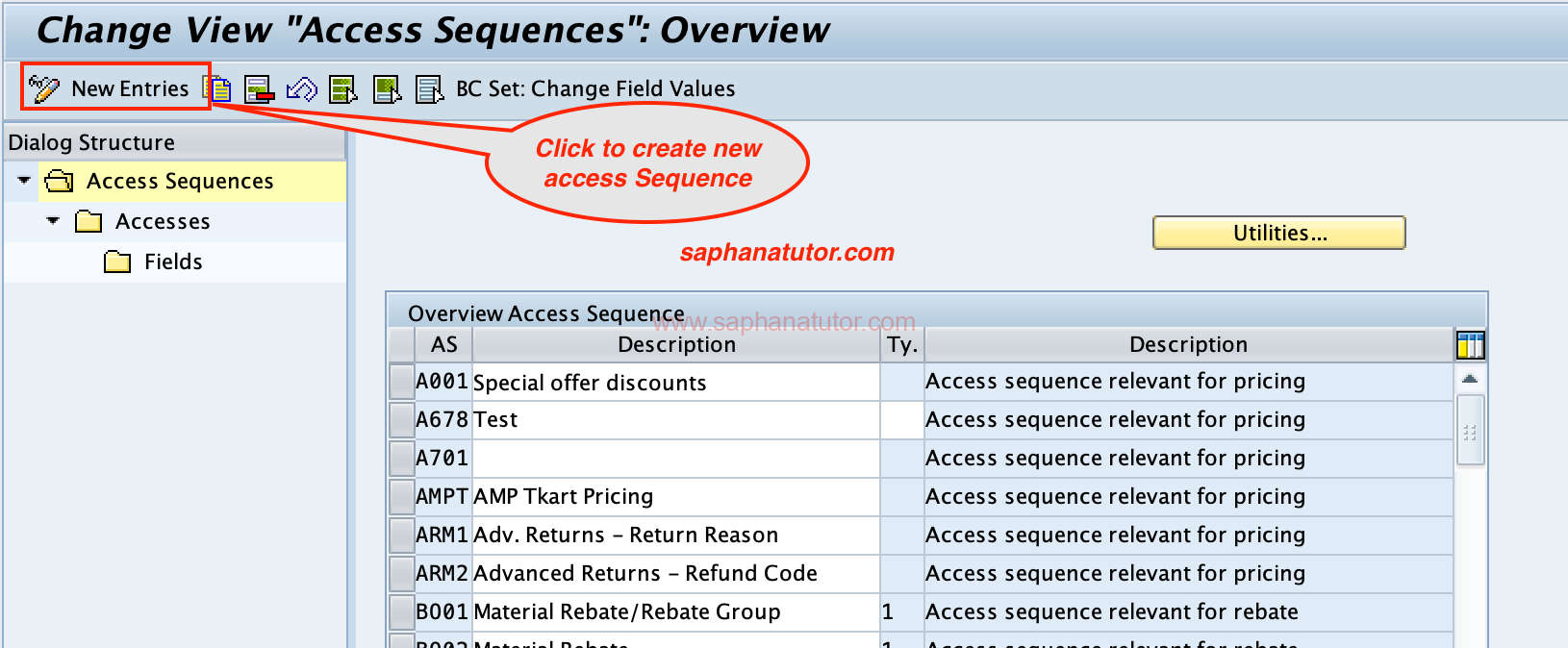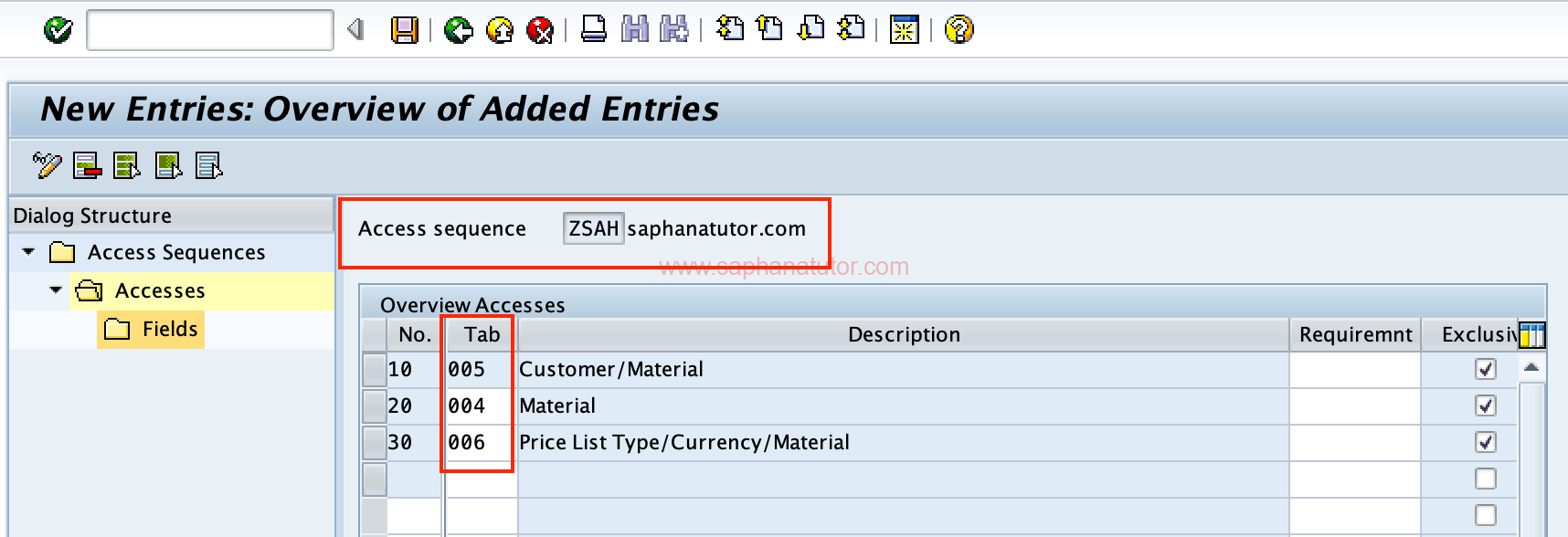Configuring Access Sequences in SAP are very important for pricing and discounting processes in the Sales and Distribution (SD) module. These configurations determine how the system retrieves the correct data for condition types such as prices, discounts, or surcharges. This guide provides a step-by-step approach to understanding and configuring Access Sequences using Transaction Code V/07.
What is an Access Sequence?
An Access Sequence in SAP is a search strategy that defines the sequence of condition tables the system evaluates to find valid pricing data. It ensures that the most specific condition is applied before moving to broader conditions. If no valid condition is found, a fallback value (e.g., standard price) can be applied.
Key Features:
- Search conditions based on customer, material, order type, etc.
- Ensures hierarchical evaluation of condition tables.
- Integral to pricing procedures in SAP SD.
Example: Access Sequence in Action
Imagine a company selling laptops with the following discount structure:
- Customer-Specific Discounts: Special agreements with loyal customers.
- Quantity-Based Discounts: Orders of more than 50 units receive a 10% discount.
- Fallback Condition: If no specific discount applies, a standard discount is used.
The Access Sequence processes these conditions in a prioritized order to determine the correct discount.
Configuring Access Sequences in SAP
Step 1: Navigate to Access Sequence Configuration
- Go to:
SPRO → Sales and Distribution → Basic Functions → Pricing → Pricing Control → Define Access Sequences - Use Transaction Code V/07 to directly access the configuration screen.
Image Reference:
Step 2: Create a New Access Sequence
- Click on New Entries to create a new Access Sequence.
- Assign a unique identifier, such as ZPR0 for a custom pricing access sequence.
- Provide a meaningful description (e.g., “Base Price for Laptops”).
Step 3: Add Condition Tables to the Access Sequence
- Select the newly created Access Sequence and click on Access to add condition tables.
- In the Access Number field:
- Enter a sequence number (e.g., 10).
- Specify the condition table (e.g., 005 for Customer/Material).
- Check the Exclusive box to ensure the system stops searching if a match is found.
- Repeat the process for additional condition tables, assigning sequence numbers like 20, 30, etc., for tables such as 006 (Price List/Material) and 004 (Material).

Step 4: Define Field Assignments
- After selecting a condition table, click on Fields to view or modify field assignments.
- Ensure that relevant fields (e.g., Customer, Material) are correctly assigned.
- Confirm the system prompts and save changes.
Step 5: Finalize and Save the Configuration
- Review the configured Access Sequence, ensuring all condition tables and fields are correctly set.
- Save your changes using a Transport Request to move the configuration to other systems if needed.

Key Tips for Configuring Access Sequences
- Use Specific Tables First: Ensure the most specific condition tables (e.g., Customer/Material) appear before broader ones (e.g., Material).
- Check the ‘Exclusive’ Box: This prevents unnecessary evaluations after a match is found, optimizing system performance.
- Testing: Always test new Access Sequences in a sandbox environment before deploying them to production.
Conclusion
Configuring Access Sequences in SAP SD is a systematic process that ensures accurate and efficient pricing. By prioritizing condition tables and tailoring field assignments, businesses can align their pricing strategies with operational needs. Follow this guide to master Access Sequences and enhance your expertise in SAP SD pricing processes.
For more SAP tutorials, explore SAP SD Tutorials. If you have questions or need further guidance, leave a comment below!
